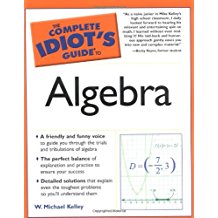Algebra: Simplifying Rational Expressions
Simplifying Rational Expressions
The plan of action for this section should be familiar; once again, with the introduction of a new concept, you'll learn how to add, subtract, multiply, and divide the new element. However, since rational expressions are just fractions, one skill precedes learning those operationsyou need to be able to reduce those fractions also.
Before I show you how to simplify fractions containing polynomials, though, I want to revisit the process I described for simplifying numeric fractions. Back then, I told you that the best way to reduce a fraction was to divide both its numerator and denominator by any common factors. Now, I want to show you why that works.
Consider the fraction 1230. Rewrite the numerator and denominator as a product of prime factors. This means breaking down each number into a product and then factoring those numbers until all you're left with are prime numbers. For example, here are two numbers that multiply to get 12 (the numerator): 4 · 3. However, that's not a prime factorization because 4 is a composite number. So, rewrite 4 as a product as well: 2 · 2 · 3. Since all of those numbers are prime, that's the prime factorization you're looking for.
Critical Point
Even if you had started with 2 · 6 in your attempt to get the prime factorization of 12, when you further factored the 6, you'd have gotten 2 · 2 · 3, the same prime factorization. That's because (according to a theorem called the Fundamental Theorem of Algebra) every number has its own, unique prime
Now it's time to factor 30 into prime numbers. Notice that 3 · 10 = 30, but 10 is not a prime number. However, factor it into 2 · 5, and you'll get the prime factorization for 30: 2 · 3 · 5. (I just wrote the factors from least to greatest.) When you've finally got the numerator and denominator factored, rewrite the fraction using those strings of factors.
Remember, the whole purpose of this exercise was to simplify the fraction 12 30 , and you're moments away from accomplishing that goal. If any factor in the numerator has a twin in the denominator, cross those two twin numbers out. In this example, you can cross out a pair of 2's and a pair of 3's.
The fraction in reduced form is 25.
Basically, this process tells you that simplifying a fraction boils down to completely factoring the numerator and denominator and then eliminating matching pairs of factors on opposite sides of the fraction bar. You'll do the same thing to simplify fractions containing polynomialsthe factors will just look a little different, that's all.
How'd You Do That?
You're allowed to cross out matching factors in the numerator and denominator because, technically, anything divided by itself is 1.
Example 1: Simplify the expression
Solution: Begin by factoring the numerator and denominator; notice that the numerator is the difference of perfect squares.
Uh ohI don't see any matching factors. Even though (3 - x) and (x - 3) are close, they don't match. However, they will match if you factor a -1 out of (3 - x):
Think about it: -3 + x and x - 3 are really the same thing (thanks to the commutative property for additionyou're just adding an x and a -3 in a different order in each one), so you can cross out those matching factors.
Kelley's Cautions
When you get the answer of -3-xx+4 in Example 1, some students are tempted to cross out the x's in the numerator and denominator. You can't do that, because the x's are now being added; remember, you can only eliminate pairs of matching factors that are multiplied, like you did earlier in the problem.
Multiply what's left in the numerator to get the numerator of the reduced fraction; since only x + 4 is left in the denominator, it must be the denominator of the reduced fraction.
It's common to leave a reduced rational expression in factored form like this (especially later, when you'll have lots of factors left in the numerator and denominator), but it's just as correct to distribute the -1 in the numerator, as well.
You've Got Problems
Problem 1: Simplify the expression 2x3 + 5x2 - 3x6x2 + 7x - 5.

Excerpted from The Complete Idiot's Guide to Algebra © 2004 by W. Michael Kelley. All rights reserved including the right of reproduction in whole or in part in any form. Used by arrangement with Alpha Books, a member of Penguin Group (USA) Inc.
You can purchase this book at Amazon.com and Barnes & Noble.







